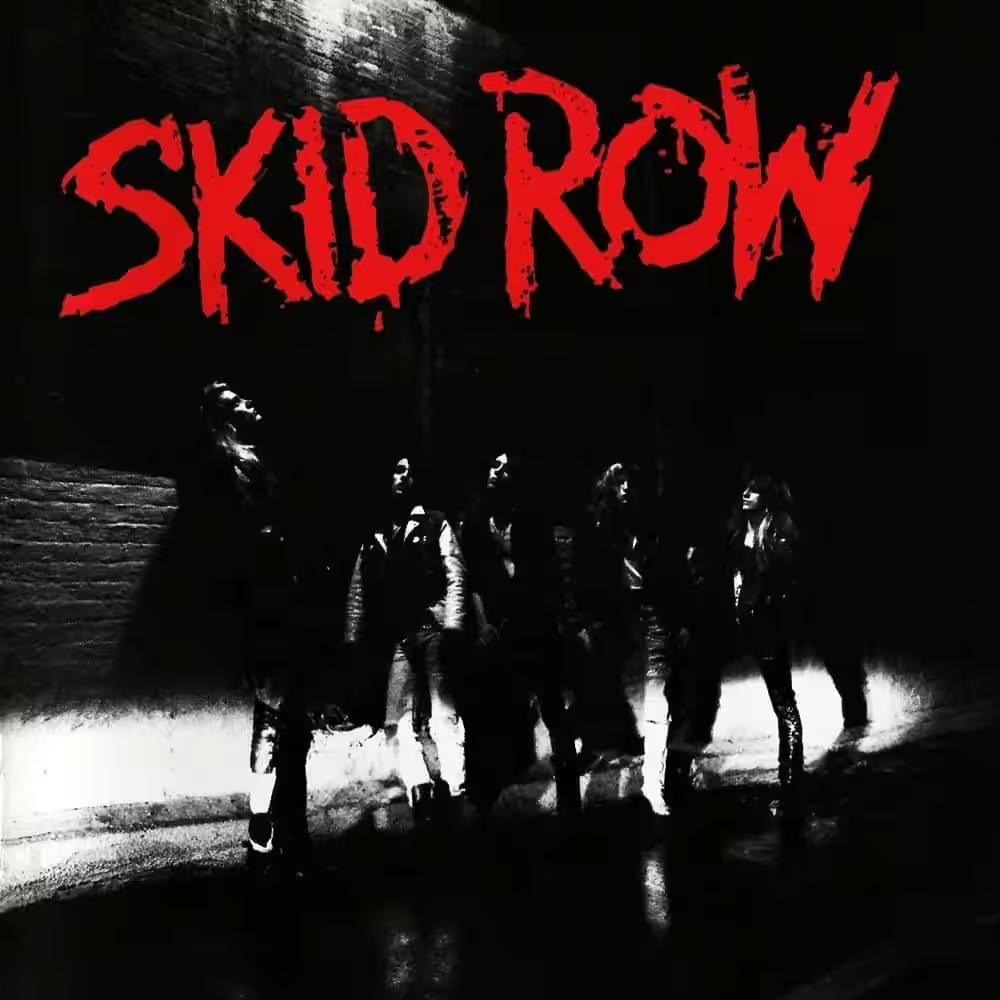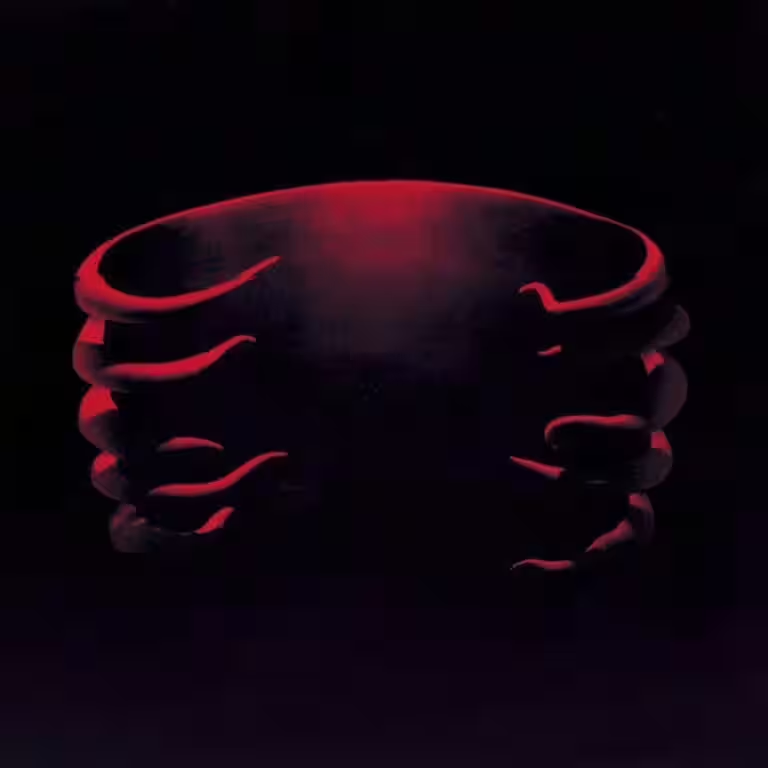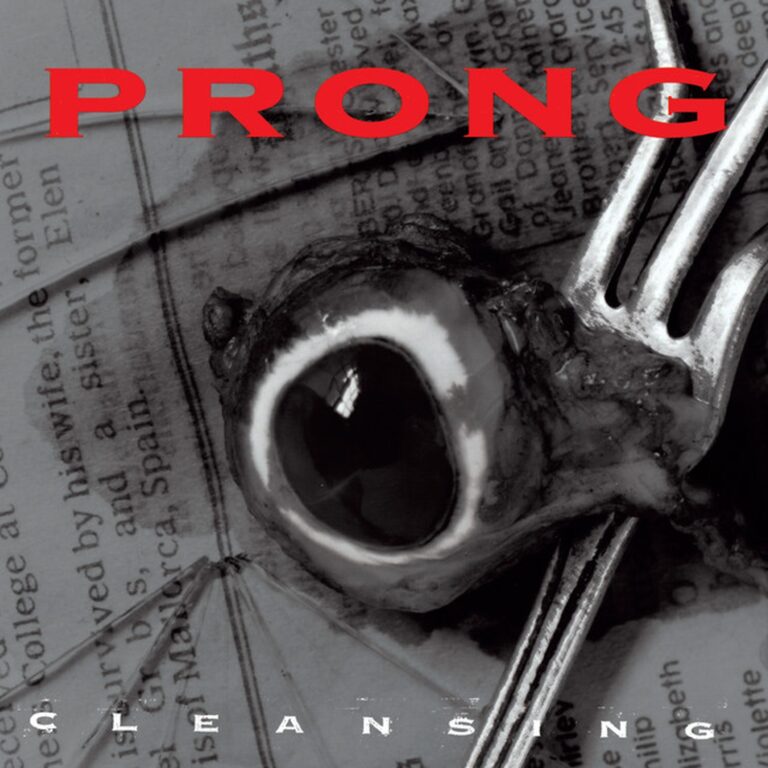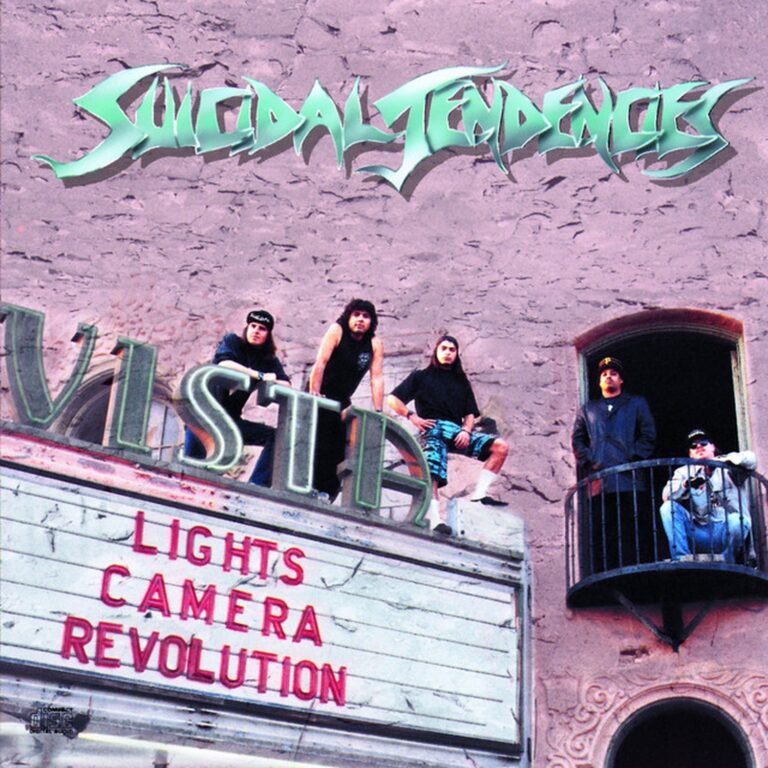
Introduction
Some albums don’t just mark a year; they define an era. Skid Row’s self-titled debut, released in 1989, is one such record. With its fusion of heavy riffs, anthemic choruses, and a youthful swagger, it quickly became a touchstone for glam metal and hard rock fans alike. Yet, beneath the surface, the album tells a story of ambition, adversity, and the changing tides of late-80s rock. From the anthems that lit up MTV to the drama behind the scenes, every facet of this record is worth exploring.
This article will guide you through every detail of “Skid Row.” We’ll look at the musical climate that gave rise to the band, the painstaking recording sessions, and the technical wizardry behind the sound. You’ll find a detailed analysis of each track, insights into the lyrics, and the stories that shaped the album. There’s also a close look at the tours, media appearances, and the legacy that Skid Row built, along with the facts and figures that set this album apart. By the end, you’ll have a thorough understanding of why “Skid Row” remains a vital chapter in rock history.
| Attribute | Details |
|---|---|
| Release date | 24 January 1989 |
| Album title | Skid Row |
| Genre | Hard Rock, Glam Metal, Heavy Metal |
| Total runtime | Approximately 39 minutes |
| Number of tracks | 11 |
| Record label | Atlantic Records |
| Recording studio | Royal Recorders, Lake Geneva, Wisconsin |
| Producer(s) | Michael Wagener |
The impact of “Skid Row” was immediate and far-reaching. It climbed to number six on the Billboard 200 and went on to sell over five million copies in the United States alone. Singles like “18 and Life,” “Youth Gone Wild,” and “I Remember You” became radio and MTV staples, each earning their place in rock’s collective memory. The album’s influence still echoes today, both as a defining glam metal statement and as a gateway for a new generation of hard rockers.
Producer Michael Wagener once said, “Skid Row was my favourite recording project. The energy, the songs, and the commitment to making a great album were all there” (Ultimate Guitar, 2011). Sebastian Bach, the band’s then-vocalist, described the moment their audience first stood for them in a stadium: “That was the moment I knew we were going to make it” (Eddie Trunk, 2019).
The blogs on this site are often used as the basis for podcast episodes where we dive deep and discuss the albums, memories, people and what was happening at the time. Listen to our podcast episode about Skid Row’s debut here.
The Genesis of “Skid Row”
To understand the birth of “Skid Row,” it helps to step back to the late 1980s. The rock world was buzzing with excess and big personalities. Glam metal acts like Faster Pussycat and Bon Jovi ruled MTV, while hard rock bands packed arenas. Yet, change was coming. Skid Row formed in 1986 in Toms River, New Jersey, brought together by bassist Rachel Bolan and guitarist Dave “The Snake” Sabo. They were soon joined by guitarist Scotti Hill and drummer Rob Affuso, with Sebastian Bach stepping in as vocalist in 1987 after a chance encounter at a wedding.
Before their debut, Skid Row spent years writing and refining their sound. They played local clubs and opened for bigger acts, including Bon Jovi. Early demos featured original vocalist Matt Fallon, but Bach’s arrival changed the band’s dynamic. Sabo and Bolan led the songwriting, crafting material that was both catchy and raw. Their sound, a blend of hard-edged riffs and melodic hooks, reflected both the glam and grit of the era. There were no guest artists on the debut, but the chemistry among the five members was unmistakable.
The record deal came thanks to Bon Jovi’s manager Doc McGhee, who helped secure a contract with Atlantic Records in 1988. Financing the album was no small feat. The band paid $35,000 to blues guitarist Gary Moore for the rights to the “Skid Row” name. The album’s budget, while modest compared to some of their peers, was stretched thin to cover recording costs, travel, and artwork. Yet, as Sabo put it, “We put everything we had into making that first record, and you can hear it in every note.”
Band members and their roles are detailed below:
| Band Member | Instrument/Role |
|---|---|
| Sebastian Bach | Lead vocals |
| Dave “The Snake” Sabo | Guitar, backing vocals |
| Scotti Hill | Guitar, backing vocals |
| Rachel Bolan | Bass, backing vocals |
| Rob Affuso | Drums, percussion |
The album’s title was simple yet bold, intended to introduce the band as a new force in hard rock. The cover artwork, designed by Gina Guarini and directed by Bob Defrin, used a black-and-white image to focus attention on the music rather than image—a conscious choice in a genre known for excess. Photographer David Michael Kennedy shot the front cover, while Mark Weiss captured the band for the back. This stripped-back visual style set Skid Row apart from their more flamboyant peers.
Recording Process
The recording sessions for “Skid Row” took place at Royal Recorders in Lake Geneva, Wisconsin, in late 1988. The studio was chosen for its top-tier equipment and the privacy it offered, far from the distractions of Los Angeles or New York. Producer Michael Wagener, already known for his work with Accept, Dokken, and Stryper, brought both technical skill and a knack for getting the best out of young bands. Engineer Dave Kent assisted, while mastering was handled at Sterling Sound.
Wagener’s approach was meticulous. He recorded the album digitally, a forward-thinking move for the time. He often used four to six microphones on guitar cabinets, including ribbon mics and Shure SM57s, to capture a wide sonic palette. The main guitar tone was built using a Furman PEQ-3 parametric EQ, an ADA MP-1 preamp, McIntosh 2100 transistor power amps, and original Marshall cabinets loaded with Celestion G12H speakers. For vocals, Bach’s performances were captured with both power and clarity, thanks to Wagener’s hands-on direction.
The studio itself featured a Solid State Logic (SSL) desk and Euphonix DAW controller, with Nuendo as the digital audio workstation. While some of the gear is now considered vintage, at the time it was cutting-edge. Below is a summary of the likely hardware used, based on Wagener’s interviews and the studio’s inventory at the time:
| Hardware/Instrument | Details |
|---|---|
| Mixing Desk | Solid State Logic (SSL) |
| DAW | Nuendo |
| Guitar Preamp | ADA MP-1 (version 1.0) |
| Power Amp | McIntosh 2100 transistor |
| Guitar Cabinets | Marshall 4×12 with Celestion G12H 30W speakers |
| Microphones | Ribbon mics (Fostex M11RP), Shure SM57, Countryman lavalier |
| EQ/Effects | Furman PEQ-3, UREI 530 EQ, BBE 802 |
| Vocal Mic | Assumed Neumann U87 or similar |
| Mastering | Sterling Sound |
The sessions were intense but mostly free from major drama. Wagener later said, “A good vibe in the studio always translates into the recording.” There were challenges, of course. The band was under pressure to deliver a hit, and the budget left little room for error. But the result was a record that balanced raw energy with technical precision.
Michael Wagener’s production credits are extensive. Below is a list of notable albums he produced, excluding Skid Row:
| Producer | Artist | Album | Year |
|---|---|---|---|
| Michael Wagener | Accept | Breaker | 1981 |
| Michael Wagener | Accept | Restless and Wild | 1982 |
| Michael Wagener | Accept | Balls to the Wall | 1984 |
| Michael Wagener | Accept | Russian Roulette | 1986 |
| Michael Wagener | Dokken | Under Lock and Key | 1985 |
| Michael Wagener | Dokken | Back for the Attack | 1987 |
| Michael Wagener | Great White | Hooked | 1991 |
| Michael Wagener | Ozzy Osbourne | No More Tears | 1991 |
Commercial Performance and Reception
When “Skid Row” hit shelves in January 1989, it made an immediate impression. The album reached number six on the Billboard 200, a rare feat for a debut. In the United States, it was certified five-times platinum by 1995, meaning over five million copies shipped. The singles—”Youth Gone Wild,” “18 and Life,” and “I Remember You”—each became major hits, with “18 and Life” reaching number four on the Billboard Hot 100 and “I Remember You” peaking at number six. Internationally, the album charted at number 12 in Australia, number 11 in Canada, number 30 in the UK, and even hit number one in New Zealand.
Below is a table of Skid Row’s studio albums, ordered by release year. This includes sales data where available.
| Album Title | Year | Sales Data |
|---|---|---|
| Skid Row | 1989 | US: 5x Platinum |
| Slave to the Grind | 1991 | US: 2x Platinum |
| Subhuman Race | 1995 | No certification |
| Thickskin | 2003 | No certification |
| Revolutions per Minute | 2006 | No certification |
| The Gang’s All Here | 2022 | No certification |
“Skid Row” earned a 5x Platinum certificate from the RIAA in the US, Platinum in Australia, 3x Platinum in Canada, and Gold in the UK. The album’s singles were supported by heavy MTV rotation, especially “18 and Life” and “I Remember You.” Skid Row also won the 1990 American Music Award for Favourite Heavy Metal/Hard Rock New Artist and was nominated for Favourite Heavy Metal/Hard Rock Album for “Skid Row.”
Other major hard rock and metal albums released in 1989 included:
- Pump by Aerosmith [7 million US sales]
- Dr. Feelgood by Mötley Crüe [US #1]
- The Real Thing by Faith No More
- Louder Than Love by Soundgarden
- Pretty Hate Machine by Nine Inch Nails
- Dirty Rotten Filthy Stinking Rich by Warrant
- Trash by Alice Cooper
- Sonic Temple by The Cult
- Beneath the Remains by Sepultura
- Bleach by Nirvana
Skid Row’s debut was named the second-best hard rock and metal album of 1989 by Ultimate Classic Rock, just behind Aerosmith’s “Pump.” The album’s success set the stage for their next release, Slave to the Grind, which reached number one on the Billboard 200 in 1991.
Elsewhere in heavy music, 1989 saw the Moscow Music Peace Festival, where Skid Row played alongside Bon Jovi, Mötley Crüe, Ozzy Osbourne, Scorpions, and Cinderella. Faith No More, Soundgarden, and Voivod toured together in the US. The Grammy Awards introduced the Best Hard Rock/Metal Performance category, though Jethro Tull’s win over Metallica was met with boos. Bands like Nine Inch Nails and Ministry advanced industrial metal, while Nirvana and Soundgarden hinted at the rise of grunge.
Track Analysis
The singles from “Skid Row” were released in quick succession: “Youth Gone Wild” in January 1989, “18 and Life” in June, “I Remember You” in November, and “Piece of Me” as a promo. Songwriting credits were shared mostly between Sabo and Bolan, with Bach contributing to “Makin’ a Mess.” These tracks showcased both the band’s hard edge and their ability to craft a power ballad.
The table below lists every song from the album, along with length and writing credits. Singles are marked with a *.
| Track Name | Length | Writing Credit |
|---|---|---|
| Big Guns | 3:36 | Sabo, Bolan, Affuso, Hill |
| Sweet Little Sister | 3:10 | Sabo, Bolan |
| Can’t Stand the Heartache | 3:24 | Bolan |
| Piece of Me* | 2:48 | Bolan |
| 18 and Life* | 3:50 | Sabo, Bolan |
| Rattlesnake Shake | 3:07 | Sabo, Bolan |
| Youth Gone Wild* | 3:18 | Sabo, Bolan |
| Here I Am | 3:10 | Sabo, Bolan |
| Makin’ a Mess | 3:38 | Sabo, Bolan, Bach |
| I Remember You* | 5:10 | Sabo, Bolan |
| Midnight / Tornado | 4:17 | Sabo, Fallon |
Note: Songs marked with * were singles. “Youth Gone Wild” peaked at US #99, “18 and Life” at US #4, and “I Remember You” at US #6. “Piece of Me” was a promo single and did not chart.
Song Meaning and Lyrics
The lyrics on “Skid Row” are a window into the band’s world—rebellion, heartbreak, and the struggles of youth. “Youth Gone Wild,” written by Sabo and Bolan, is an anthem for outsiders and misfits. The chorus—“They call us problem child / We spend our lives on trial / We walk an endless mile / We are the youth gone wild”—summed up the band’s ethos (Genius Lyrics).
“18 and Life” tells the tragic story of Ricky, a troubled youth whose life is changed forever by a single act of violence. The song was inspired by real-life stories and, as Sabo explained, originally drew from his brother’s experience as a Vietnam veteran before evolving into a cautionary tale about crime and consequence (Quora). The chorus—“18 and life you got it / 18 and life to go / Your crime is time and it’s 18 and life to go”—is both a warning and a lament.
“I Remember You” stands apart as a power ballad. Written by Sabo and Bolan, it’s a love letter to lost youth and old flames. The lyrics—“Woke up to the sound of pouring rain / Washed away a dream of you”—capture nostalgia and longing. This song became a wedding favourite and a staple of late-night radio (Genius Lyrics).
“Piece of Me,” also written by Bolan, is a defiant statement about fame, temptation, and standing your ground. The lyrics are direct and unfiltered, reflecting the band’s brash attitude. Collaboration on the album was tight-knit, with Sabo and Bolan writing most material and Bach contributing to “Makin’ a Mess.”
Touring and Promotion of Skid Row
Promotion for “Skid Row” was relentless. The band filmed high-profile music videos for each single, gaining heavy rotation on MTV. Their first big break came as the opening act for Bon Jovi’s “New Jersey” tour, which introduced them to stadium audiences across North America and Europe. Skid Row also performed at the Moscow Music Peace Festival in August 1989, sharing the stage with Scorpions, Mötley Crüe, and Ozzy Osbourne.
The 1989 tour was extensive. Skid Row played more than 100 shows across the US, Canada, Japan, Russia, and Europe. Notable dates included the Hammersmith Odeon in London (13 November 1989), the Moscow Luzhniki Stadium, and two sold-out nights at Boston Garden. The band also toured Japan in July, with shows in Seto, Osaka, Tokyo, and Kawasaki.
In 1989, Skid Row toured with Bon Jovi, Mötley Crüe, and Aerosmith. They opened for Bon Jovi in North America and Europe, played with Mötley Crüe on the “Dr. Feelgood” European tour, and joined Aerosmith for part of the “Pump” tour. The band’s energetic live show, fuelled by Bach’s wild stage presence, made them a fan favourite. Notably, Skid Row was briefly kicked off the Bon Jovi tour for onstage profanity, a move they later described as a “badge of honour.”
Influences and Legacy
Skid Row drew inspiration from a range of hard rock and heavy metal acts. Their sound echoed the riff-driven style of Guns N’ Roses, the melodic sense of Bon Jovi, and the raw energy of Judas Priest and KISS. The table below summarises these influences and the artists who later cited Skid Row as an inspiration.
| Influences on “Skid Row” | Artists Influenced by “Skid Row” |
|---|---|
| Guns N’ Roses | Stone Temple Pilots |
| Bon Jovi | Steel Panther |
| Judas Priest | Asking Alexandria |
| KISS | Avenged Sevenfold |
| Motörhead | Halestorm |
Released in 1989, “Skid Row” arrived at a turning point in popular culture. The Berlin Wall fell, marking the end of the Cold War. In the UK, the Hillsborough disaster changed football forever. Madonna’s “Like a Prayer” premiered, while Nirvana’s “Bleach” and Faith No More’s “The Real Thing” hinted at the coming grunge wave. The year also saw the release of “Batman” in cinemas and the debut of “The Simpsons” on television. Skid Row’s blend of glam and grit captured the restless spirit of the time, bridging the gap between hair metal and the heavier sounds that would soon dominate.
Five Things about Skid Row
Here are five verified facts about Skid Row, sourced from multiple credible outlets:
| Fact | Details |
|---|---|
| Band Name Purchase | Skid Row paid $35,000 to blues guitarist Gary Moore for the rights to the name. |
| Bon Jovi Connection | Bon Jovi’s manager Doc McGhee secured their record deal with Atlantic Records. |
| Debut Album Success | The debut album sold over five million copies in the US and went 5x Platinum. |
| Moscow Music Peace Festival | Skid Row played at the 1989 Moscow Music Peace Festival with Bon Jovi, Mötley Crüe, and Scorpions. |
| American Music Award | They won the 1990 American Music Award for Favourite Heavy Metal/Hard Rock New Artist. |
Media and Television Usage
Skid Row’s songs have appeared in a range of films, TV shows, and video games. The table below lists known uses of tracks from “Skid Row” in media, based on Tunefind data.
| Song Title | Media Appearance | Year |
|---|---|---|
| 18 and Life | American Satan (film), Gilmore Girls (TV), Guitar Hero Encore: Rocks The ’80s (game) | 2017, 2006, 2007 |
| I Remember You | Rock of Ages (film), Friday Night Lights (TV), South Park (TV), October Road (TV), Manifest (TV), American Gods (TV) | 2012, 2008, 2007, 2008, 2018, 2019 |
| Youth Gone Wild | Young Sheldon (TV), Togetherness (TV), Guitar Hero: On Tour (game) | 2017, 2015, 2008 |
| Sweet Little Sister | Civil War (film) | 2024 |
Critical Reviews and Retrospectives
Upon release, “Skid Row” received strong reviews for its energy, songwriting, and vocal power. Retrospective reviews continue to praise its blend of aggression and melody. Ultimate Classic Rock named it the second-best hard rock/metal album of 1989, highlighting its mix of ballads and hard rockers. Discogs users rate the album 4.36 out of 5, with original pressings praised for their punchy sound. The album’s singles, especially “18 and Life” and “I Remember You,” are often cited as classics of the genre.
The table below lists selected reviews and notable quotes:
| Publication | Score | Quote | Link |
|---|---|---|---|
| Ultimate Classic Rock | Top 20 (2nd) | “The debut sold 5 million copies… Vocalist Sebastian Bach has one of the most powerful voices of his generation.” | Read |
| Discogs | 4.36/5 | “Original pressings are fresh, punchy, and full of energy.” | Read |
| Nowhere Show (Facebook) | N/A | “One of the best debut albums of all time. Still listen to it every week.” | Read |
After Skid Row
After the debut’s success, Skid Row released Slave to the Grind in 1991, which debuted at number one in the US. The band’s sound grew heavier, but internal tensions soon surfaced. Sebastian Bach was fired in 1996, and drummer Rob Affuso also departed. The band went on hiatus before returning in 1999 with new vocalist Johnny Solinger. Skid Row released “Thickskin” (2003) and “Revolutions per Minute” (2006), but these albums did not match the success of their earlier work. As of April 2025, the band is active, with Erik Grönwall recently stepping down due to health reasons and Lzzy Hale of Halestorm filling in for live dates.
Conclusion
“Skid Row” is more than a relic of glam metal’s heyday. It’s a record that captured the hopes and frustrations of a generation on the brink of change. Its songs still resonate—whether blasted in a car or sung at a reunion show. With its blend of raw power, melody, and attitude, “Skid Row” remains a landmark in hard rock. The band’s story, marked by triumph and turbulence, is still being written, but their debut stands as a testament to what happens when a group of young musicians pour everything into their art.
Further Reading
For more on Skid Row and related artists, check out these resources:
- Unraveling Slave to the Grind: Skid Row’s Metal Evolution (Our blog article)
- Faster Pussycat: The Glam Metal Revolution of 1987 (Our blog article)
- The Making of Slippery When Wet – Bon Jovi’s Breakthrough (Our blog article)
- Aerosmith’s Permanent Vacation: The Ultimate Comeback (Our blog article)
- Wikipedia page for Skid Row
- Official Skid Row website
- Atlantic Records website
Let us know in the comments what your thoughts are on Skid Row by Skid Row. Did we miss anything? Share your experiences and join the conversation!



